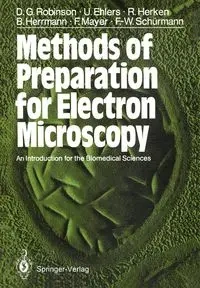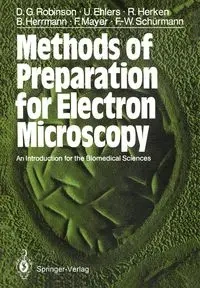Methods of Preparation for Electron Microscopy - David G. Robinson
Methods of Preparation for Electron Microscopy - David G. Robinson
- An Introduction for the Biomedical Sciences
AutorzyDavid G. Robinson
EAN: 9783540175926
Marka
Symbol
786HJY03527KS
Rok wydania
1987
Strony
212
Oprawa
Miekka
Format
17.0x24.4cm
Redakcja
Mühlethaler K.
Język
angielski

Bez ryzyka
14 dni na łatwy zwrot

Szeroki asortyment
ponad milion pozycji

Niskie ceny i rabaty
nawet do 50% każdego dnia
Niepotwierdzona zakupem
Ocena: /5
Marka
Symbol
786HJY03527KS
Kod producenta
9783540175926
Rok wydania
1987
Strony
212
Oprawa
Miekka
Format
17.0x24.4cm
Redakcja
Mühlethaler K.
Język
angielski
Autorzy
David G. Robinson

In 1939, when the electron optics laboratory of Siemens & Halske Inc. began to manufacture the first electron microscopes, the biological and medical profes sions had an unexpected instrument at their disposal
which exceeded the reso lution of the light microscope by more than a hundredfold. The immediate and broad application of this new tool was complicated by the overwhelming prob lems inherent in specimen preparation for the
investigation of cellular struc tures. The microtechniques applied in light microscopy were no longer appli cable, since even the thinnest paraffin layers could not be penetrated by electrons. Many competent biological and
medical research workers expressed their anxiety that objects in high vacuum would be modified due to complete dehydration and the absorbed electron energy would eventually cause degrada tion to rudimentary carbon backbones.
It also seemed questionable as to whether it would be possible to prepare thin sections of approximately 0. 5 11m from heterogeneous biological specimens. Thus one was suddenly in posses sion of a completely unique instrument
which, when compared with the light microscope, allowed a 10-100-fold higher resolution, yet a suitable preparation methodology was lacking. This sceptical attitude towards the application of electron microscopy in bi ology
and medicine was supported simultaneously by the general opinion of colloid chemists, who postulated that in the submicroscopic region of living structures no stable building blocks existed which could be revealed with this apparatus.
EAN: 9783540175926
EAN: 9783540175926
Niepotwierdzona zakupem
Ocena: /5
Zapytaj o produkt
Niepotwierdzona zakupem
Ocena: /5
Napisz swoją opinię

